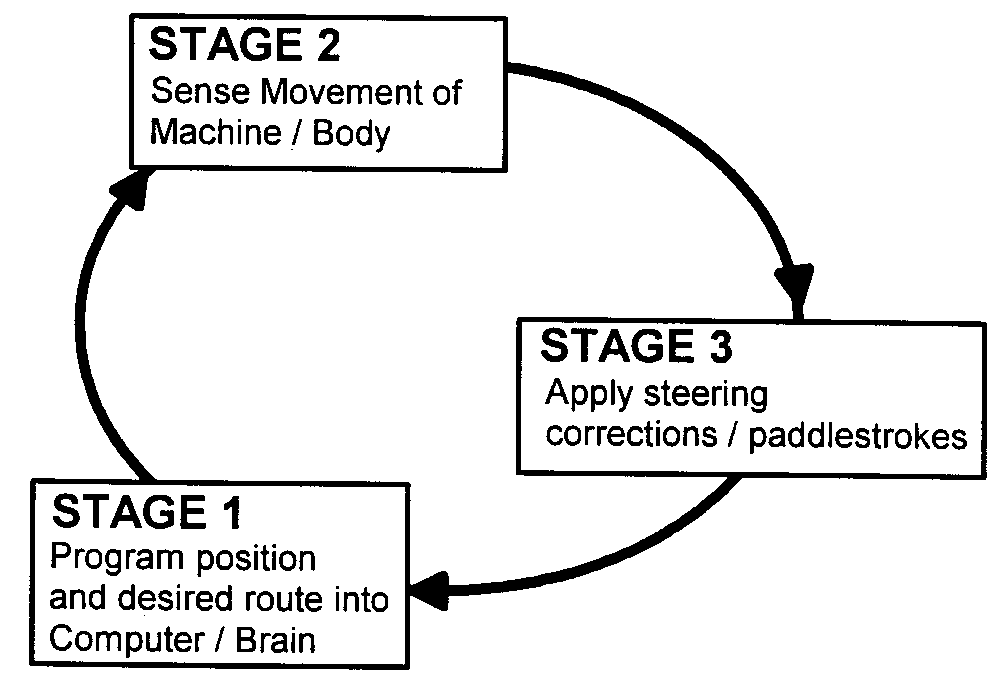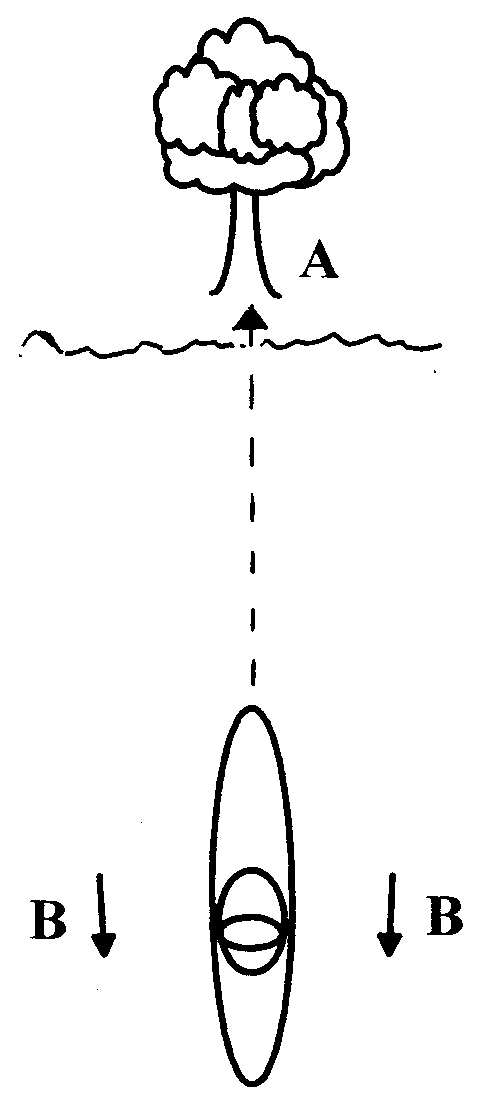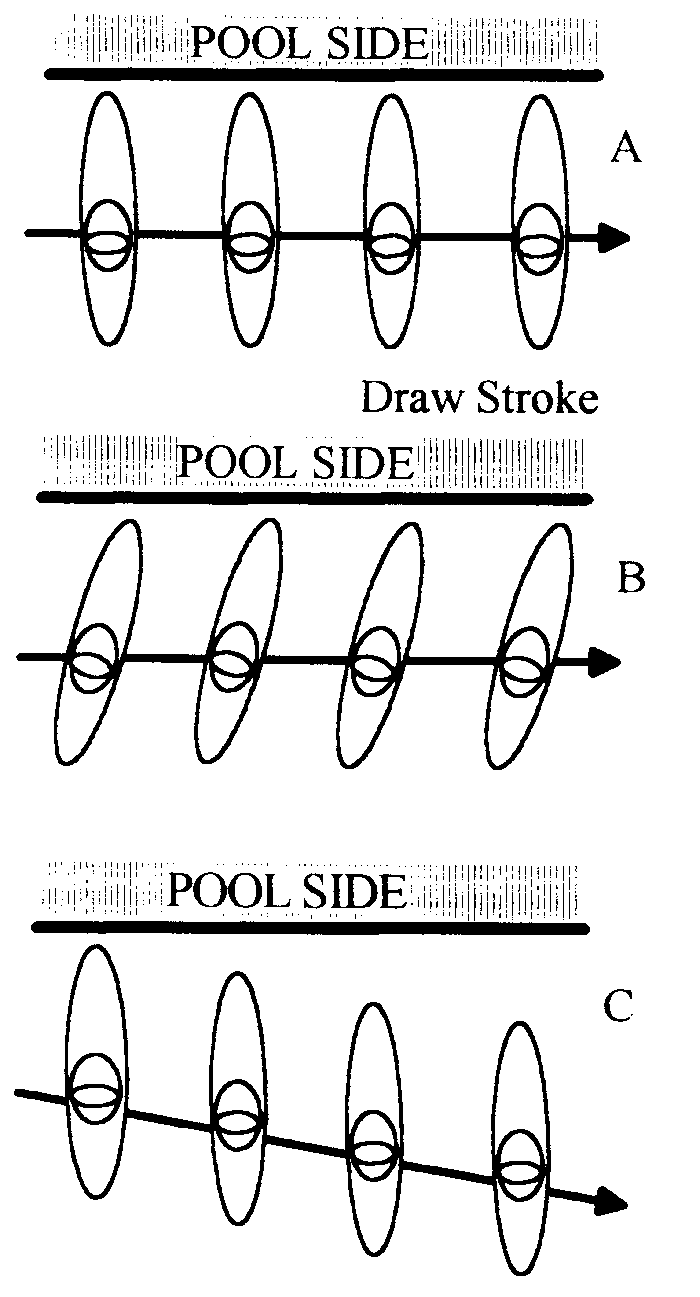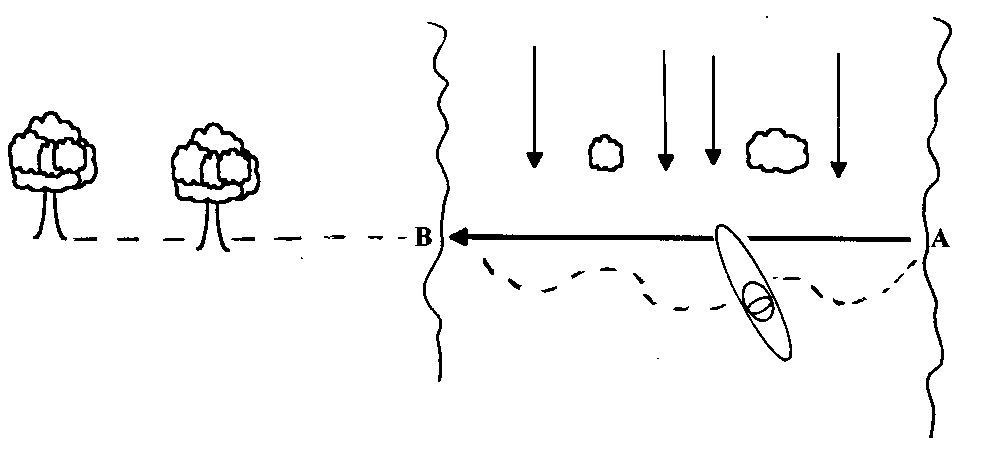| The Control System Model |
|
Canoeist Magazine Articles |
| The Control System Model |
|
Canoeist Magazine Articles |
a) - Introduction
b) - Intuitive Paddling
c) - Kayak Control Exercises
d) - Spacial Awareness
In last month's article I talked about how Eastern Religions had influenced me in the way that I paddle and the way that I coach. Unfortunately the problem with discussing this, or any other inner emotional subject with British canoeists, is that they feel embarrassed when the subject is mentioned.
Americans have no problems and can discuss their inner psyche at the drop of a hat. Many Europeans also find few problems. Sadly the average male British canoeist will congeal into an embarrassed silence at the first mention of anything remotely strange. I find there is a need to translate any ideas into a more acceptable language. One example of this conversion is the "Kayak Control" theory, which is an attempt to coach in a structured way the sort of automatic, intuitive paddling I talked about in the East Meets West article.
Look at Figure 1, which represents the control system is needed to move any machine or object under effective control.
 |
|
This system has three stages.
If we want to study the movement control of any object or body we can apply the same three stages:
In an aeroplane for example, the plane could be in mid-air above an airfield, with a route down the glide path to the runway. Having programmed the route into the auto-pilot, stage two would be measuring the plane's position and speed, using navigation beacons, radar, height finders and a compass. Once the auto-pilot had calculated the necessary corrections, steering would come from the ailerons and rudder. Even while these corrections were being made the auto-pilot would again be sensing and calculating new corrections in a continuous cycle.
A canoeist's body is just like any other physical object. It obeys the same control system principles. The first stage is deciding the position and the route to follow. The position could be in midstream, with a route across an eddyline into a break-out. Stage two measures what happens to the kayaker as the eddy line is crossed, using the human senses of balance, sight, touch and sound to monitor what is happening to the boat. The paddle strokes are in phase three, controlling the kayak with a bow rudder or body lean.
Let me give you an example to show how important this stage 2 sensing is to a canoeists paddling efficiency. Think of a car in heavy fog. All that has happened is that one sense, sight, has been severely limited. Yet think how much that limitation will affect your ability to control the car accurately. Think also of cats eyes in the road, and the difference they make. They make it much easier for a driver in the dark to see the route quickly, and program it into the mind. Cats eyes and fog have no affect on your ability to steer and use the brakes and accelerator. These stage 3 skills are totally unaffected. Yet cats eyes or fog have a dramatic affect on your driving efficiency, as they affect the overall control system.
We are all trying to become intuitive paddlers, reacting smoothly and automatically to the water's effects. Could intuitive paddling simply be defined as a well trained personal control system, which is coached by working on all of the stages described here?
To me the fundamental value of this model is the order in which the stages come;
I believe that we should teach canoeing in the same way. We should focus on sensing the movement of the boat first, not controlling the movement of the paddle.
In Britain we teach stage three, the paddle strokes very well. Stage one is often taught to white water paddlers, but not with the same emphasis. But how good are we at coaching stage two?
Figures 2. and 3. and the accompanying text show simple examples of kayak
control applied to basic kayak coaching at 1 and 2 star level.
 |
|
One key to accurate paddling is to always have a target to aim for, this concept can be introduced even on the first time on the water. When first time novices are trying to paddle in a straight line, point out a target, such as a tree or post on the far bank. The trick is to line up your bow exactly with the tree (A), and watch out for when the boat moves off course.
At this stage do not introduce "proper" paddling strokes, but very short pushes on each side, well out from the kayak side (B). The instructions should be to keep the bows of the boat lined up with the target, and then gently work your way forwards.
For novices it can sometimes be very difficult to detect when a boat is starting to spin off course until it is too late, and a big uncontrollable veer has already started. So if you can teach the novice an accurate technique which senses the boat's movement much earlier, then he or she can learn to react faster, and therefore steer more accurately.
This is kayak control. Start with a carefully defined route (in this case a straight line between boat and tree - stage 1) then teach a method of sensing movement (watching the bow carefully, to detect when it moves right or left - stage 2) then teach the steering corrections (short gentle jabs on each side - stage 3).
In the early coaching sessions an efficient paddle style is not important.
It should be introduced later once the novice is confident and accurate.
 |
|
It is easy to do draw strokes or reverse paddling in the middle of a pond or swimming pool. Because you are away from the bank and other visual clues you can be very inaccurate without realising it. It is much harder (and more useful) to paddle in relation to a target. The diagram shows one of my favourite exercises, which can be practised in a pool or by any straight bit of bank.
Keep your bows about one foot off the bank, then draw stroke sideways, keeping exactly at a right angle to the bank, and keeping the same distance away from the bank or pool side (Diagram 3 A). It sounds easy until you try it. Most paddlers will end up crabbing sideways as in B or C.
There are many other simple ways of introducing accuracy to the teaching of paddlestrokes. With a bit of imagination it is fairly straight forward to invent other simple routines which allow a paddler to practise a stroke in a way which makes it easy to sense how accurately the paddler is controlling the boat.
The theory is simple. It is not sufficient to look only at the movement of the paddle in relation to the kayak. Look also at the way the kayak moves in relation to the water and to the bank. When testing sweep strokes for a star test, do you say
or do you say
Figure 4. shows an example of that same technique applied to white water,
in this case a ferry glide. Define an exact route to follow, a straight
line from A to B, keeping the two trees in line with each other (what sea
kayakers call a transit). Then set your student the task of doing the ferry
glide, and then describing to you verbally exactly what route he or she
followed, and how this differed from the set route.
 |
Figure 4.AWARENESS DURING FERRY GLIDES |
Doing this exercise, it is surprising how many canoeists are aware that they had got to the far bank, but could not describe to you the route they followed, or what happened to their boat. After some practise, a more aware student might tell you that they were downstream of the planned route, but when they got behind the rocks in slower water they made up some ground, only to loose it again in faster water. The task sounds simple. Try it with some trainee kayakers (or with your friends) and see how good the average paddler is at sensing and remembering their exact movement. You might be surprised.
This exercise tests vision, where the paddler looks to see if the route has been followed accurately. It is just as easy to test other senses such as touch through your hands (did you sense the force of the water on your paddle in the bow rudder?) or through your backside (did you sense the boat being pushed sideways by the water as you crossed the eddy line?).
The ability to sense the water pushing the boat is especially important when breaking in or out. I find it useful to teach a student to recognize this pushing force when crossing the eddy line, and then experiment. Try different approach angles to the break out. Paddle faster or slower, less or more edge, leaning forwards and backwards. See how all of these changes affect the turning force you feel through your feet and seat.
There are two reasons why I like to concentrate on the sort of route awareness and sensory coaching described here. Firstly it reflects real paddling. Whether you are a competitive racer going for gold, or a recreational tourist on a big rapid, success is determined by how accurately you can move your boat, not how accurately you can move your paddle. It makes sense therefore to have a coaching system that concentrates on the movement of the boat, not the movement of the paddle.
There is also an equality aspect. A different name for stages 1 and 2 of kayak control is "spatial awareness". There are differences in the way that men and women develop spatial awareness, and men seem to find it easier to develop these skills automatically. The classic BCU paddle centered coaching evolved over the years to match the way that men learn. They can be taught the paddle strokes, and be left to pick up the spatial skills as they develop. Women seem to develop spatial skills in a different way, and often benefit from specific coaching concentrating on these spatial awareness exercises.
This sort of coaching can often lead onto another difference between men and women, which is emotional awareness, the ability to deal with emotions such as excitement, nervousness, elation and fear. As a broad generalisation the masculine style is to bury emotions deep down. If the emotions get too close to the surface the men begin to feel very uncomfortable, so they hide their confusion with jokes, laughter and loud abuse. The feminine style is not to hide emotion, but to share it and discuss it with others, achieving mutual support.
Think of the break out coaching described above. Quite often in a break out session the student will begin to make the occasional good, sharp carving break out. You need not look at the boat to tell if the move was good. Look at the student's face, and especially the eyes. It feels good, and the exhilaration shows. I like to discuss and reinforce these emotions. Why do we go canoeing.? One reason is to enjoy these sensations of movement and speed.
If you do a move you enjoy, recognise it, discuss why it was good, and how you can make it better. I would argue that you enjoy moves where you get a massive surge of response and feedback from your senses. You feel nervous and do not enjoy moves when you are not getting enough feedback from your senses, and you do not feel to be in control.
If somebody is nervous, perhaps in a stopper, it can be helpful to discuss why they are nervous. They are not afraid of the stopper as such, they are afraid of going into a situation where they do not feel to be aware and in control of what is going on. In these cases can be helpful to work on exercises which improve spatial awareness in that specific circumstance, and therefore increase the sense of being "in control". Improved awareness will automatically lead to increased confidence and reduced nervousness.
If you want a good book to read on this subject, then there is no better book than "Inner Skiing" by W. Timothy Gallwey and Robert Kreigel (Random House publishers - ISBN 0679778276). This is based on their well known Inner Game theory. It is possible to read the whole book and apply it to canoeing with a few simple conversions. Read "canoe" for "ski", "paddle" for "ski pole" and "rapid" for "mogul field" and the book makes perfect sense.